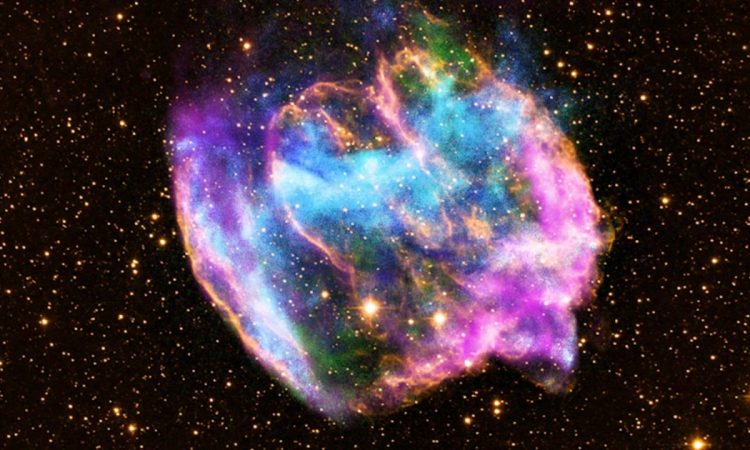
Supernova remnant W49B (symbol image)
© X-ray: NASA/CXC/MIT/L.Lopez et al; Infrared: Palomar; Radio: NSF/NRAO/VLA
Astronomers have found a new method to Supernovae to get on the trail. That’s what they found 307 previously undiscovered events. Among them are also 7 particularly rare supernovae.
Supernova remnants (SNR) are expanding ones Fogwhich arise from a supernova explosion. Material that either remained from the explosion or accumulated after the cloud spreads collects there. A famous example of an SNR visible with a telescope is the Crab Nebula.
➤ Read more:
Rare oxygen-rich SNR found
Some rare nebulae are particularly rich in oxygen. So far only 8 such objects in the Milky Way and the Magellanic Cloud identified. How such oxygen-rich SNRs are formed and what type of supernova causes them has not yet been sufficiently researched.
This could be addressed with the team’s new research Timo Kravtsov am European Southern Observatory (ESO) change. Their new method exploits the capabilities of the Very Large Telescope (VLT) in Chile.
Emission lines reveal supernova remnants
The team looked for regions that show signs of shocks like those that occur after a supernova. There they analyzed them Emission lineswith which the composition of these regions can be read using different wavelengths of light.
So they were able to get oxygen emissions in 35 of the 307 newly discovered supernova remnants. After further analysis, 7 of them turned out to be oxygen-rich. The researchers compared their data with previously collected observations X-rays away. The radiation is caused by the shock wave after the supernova.
➤ Read more:
Some of the objects had a luminosity just below the limit for ultraluminous X-ray sources (ULX). These point sources of radiation shine brighter than stars can before they become unstable. So far, no ULX is known in the Milky Way.
Search in other galaxies
The researchers now plan to apply their new method to others nearby galaxies to apply. They hope to find more oxygen-rich SNRs. So they want to find out more about the origin of these nebulae. The research has been previously published and is currently under review.

